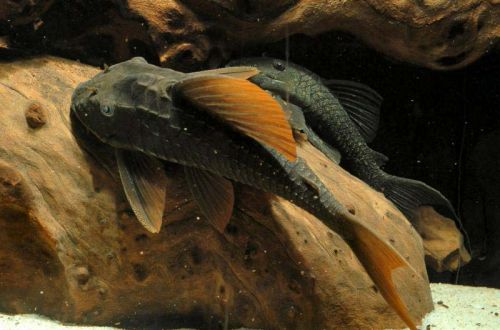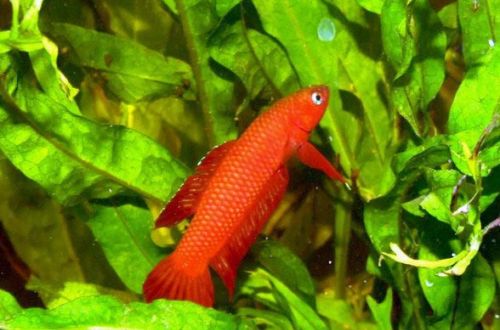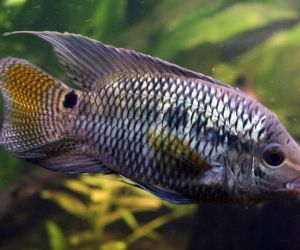
Plecostomus Cochliodon
Plecostomus cochliodon, scientific name Hypostomus cochliodon, belongs to the family Loricariidae (Mail catfish). The catfish is native to South America. Inhabits the vast basins of the Paraguay and Parana rivers in the middle reaches in the southern states of Brazil, northern Argentina.

Description
Adult individuals reach a length of about 23 cm. The fish has a flattened body, but unlike many related species, a rather high back. The body is covered with rows of bony plates. An additional means of protection are sharp spikes, stretching in several lines along the lateral line. The fins are large, fan-shaped.
The coloration is variable and depends on the age of the fish. Young catfish have a combined pattern of a combination of dark and light, golden colors. As they grow older, the color becomes monochromatic – dark gray, and the fins acquire a reddish tint.
Behavior and Compatibility
A relatively peaceful species that is able to get along with many other cyprinids, South American cichlids, some non-territorial catfish of comparable size.
It is worth remembering that such friendly behavior is possible only in a spacious aquarium. With a lack of space, competition for territory is inevitable, especially with relatives.
Brief information:
- The volume of the aquarium – from 240 liters.
- Temperature – 21-24°C
- Value pH — 6.3–7.2
- Water hardness – 10–18 dGH
- Substrate type – sandy
- Lighting – subdued
- Brackish water – no
- Water movement – moderate
- The size of the fish is about 23 cm.
- Nutrition – wood, algae and dry food based on them, pieces of vegetables
- Temperament – peaceful
- Content singly or in groups
Maintenance and care, arrangement of the aquarium
The optimal size of the aquarium for one adult catfish starts from 240-250 liters. Since Plecostomus Cochliodon feeds almost exclusively on algae and wood particles, it is important to provide for the presence of natural snags in the design. In conditions of sufficient lighting, the surface of the snags will be covered with algae, which will serve as an additional source of food.
Large snags will serve as a place for shelter, where the catfish will hide. Aquatic rooting plants are not essential as they can be eaten or damaged. However, plants floating on the surface will be a useful addition to the design as a means of shading.
For long-term maintenance, it is necessary to provide a high level of oxygen, clean running water. Being native to the subtropics, the temperature should not be too high. 21–24°C is considered comfortable at pH values close to the neutral mark.
Food
In the course of scientific research, Plecostomus Cochliodon and other related species were found to feed not so much on algae as on wood. The intestines of these fish are inhabited by specialized bacteria that break down wood chips. It is for this reason that snags are a must-have design element.
In a home aquarium, in addition to wood, it is necessary to serve dry sinking food based on algae, plant components, as well as pieces of cucumbers, zucchini, blanched spinach, peas, etc.





